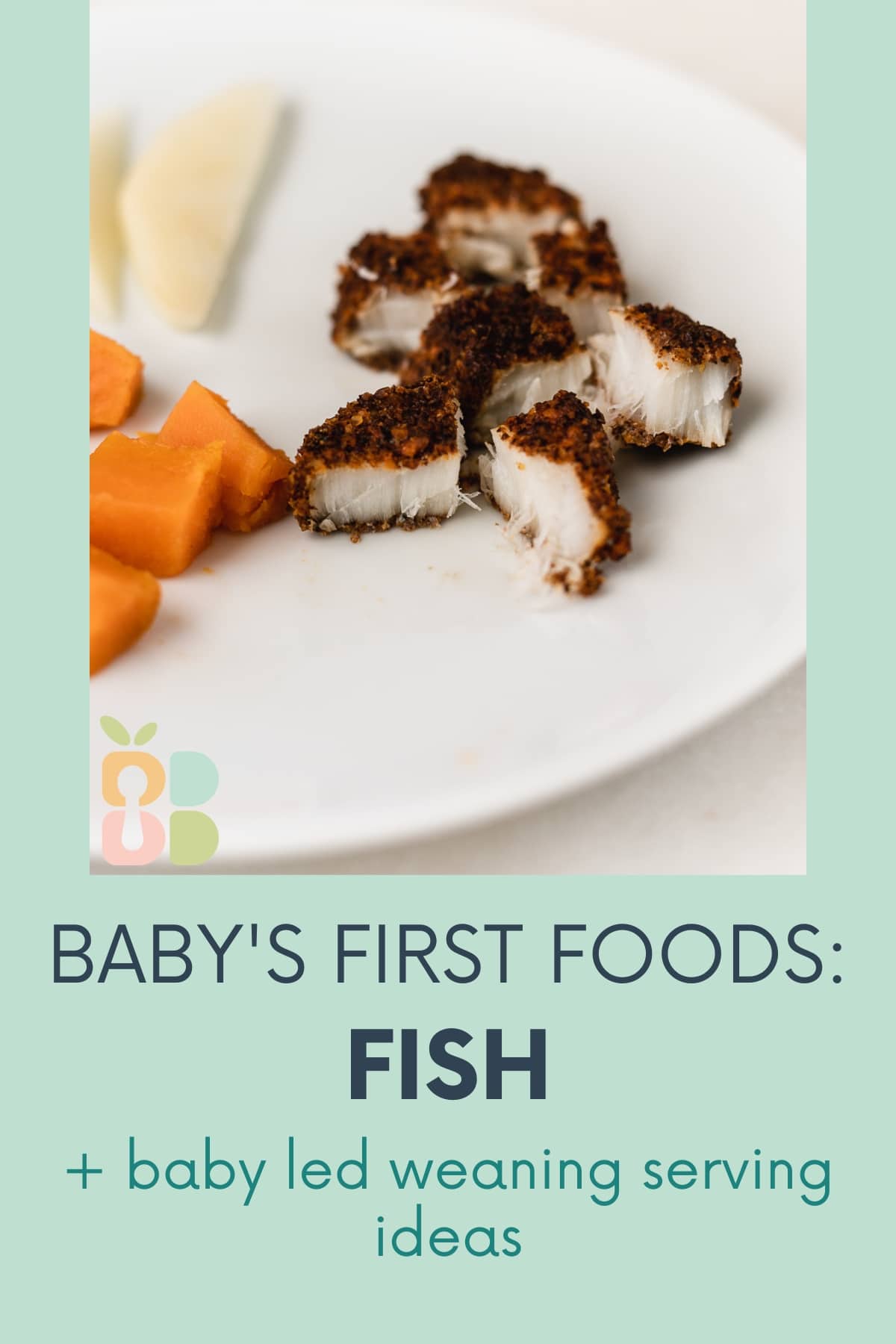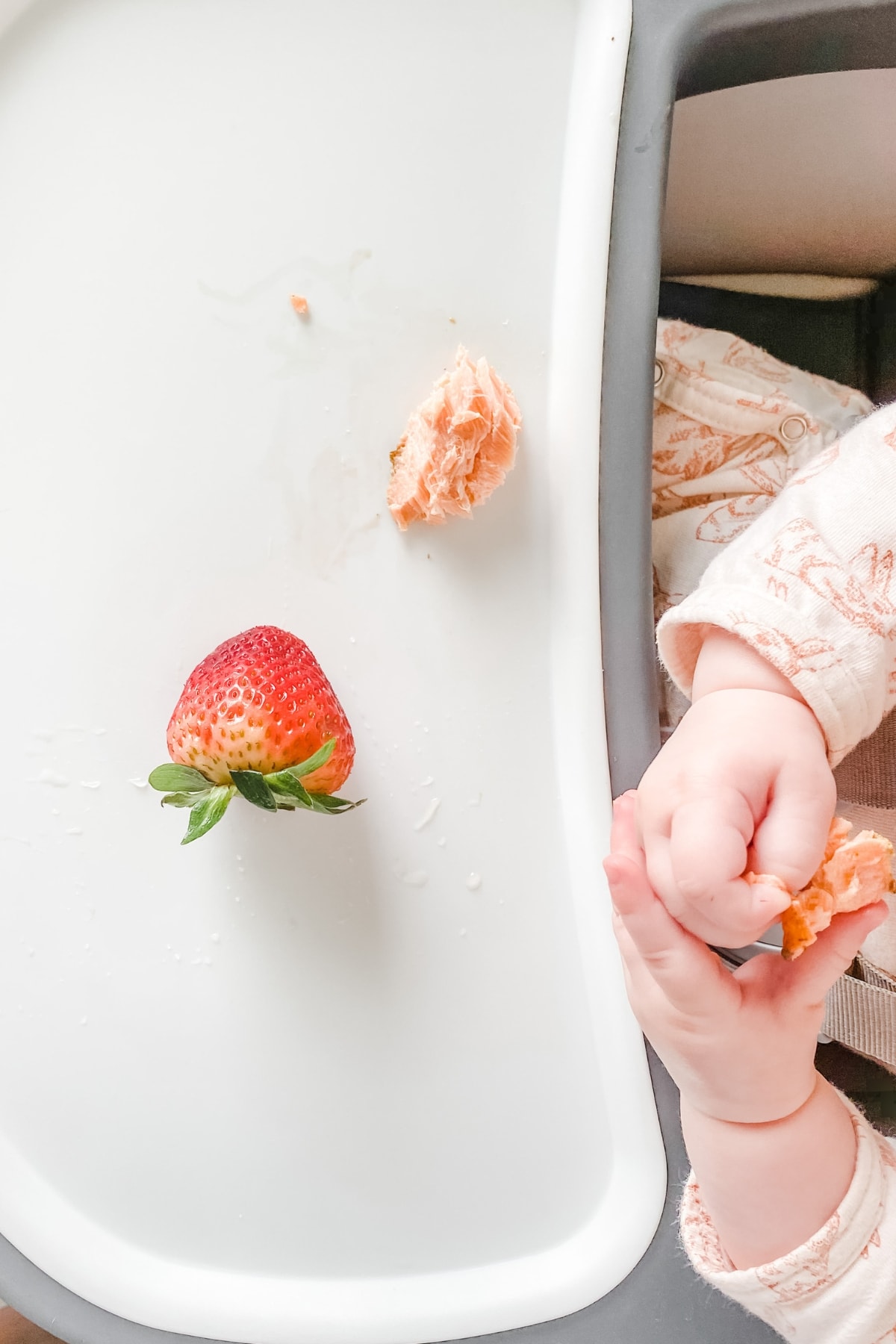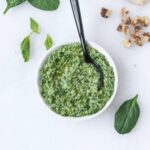Fish is one of the best first foods for babies starting solids with a baby-led weaning approach. Learn why fish is so important for babies and how to serve it as finger food!

Fish is continuing to be recognized as an important food for Americans to include in our diets. It's recommended in the Dietary Guidelines for Americans to eat 2 servings of seafood per week for both adults and kids. Luckily, if you're using a baby-led weaning approach, increasing the amount of seafood in your diet will also mean increasing it in the baby's diet, and vice-versa.
Here's why fish is an excellent first foods for babies, and why I, as a dietitian, recommend introducing fish to your baby early and often!

Why Fish Is a Great First Food For Babies
Fish (and other seafood) is loaded with essential nutrients that babies need. It's also naturally a soft texture when cooked, making it easy for babies to eat without much modification (if any). And it's also a potential allergen, so it's important to expose babies early- keep reading for more on allergens.
Essential Nutrients in Fish and Seafood
Seafood is the only food rich in DHA. DHA is an omega-3 fatty acid (or healthy fat) that is super important for babies' brain development, as well as for their eyes. Seafood is also a source of protein, iron, vitamins B12 and D, and minerals like selenium, zinc, and iodine.
Allergen Exposure
While most of the research on early allergen exposure is focused on peanuts and eggs, the general consensus among health professionals is now to expose infants to all potentially allergenic foods early (around 6 months) and often.
Doing so is thought to lower the risk of baby developing a food allergy to those foods. Fish and shellfish are both potential food allergens, so it's important to include them in baby's diet from the very beginning.
Read more: Introducing Allergen Foods to Babies
What About Mercury?
The benefits of consuming seafood far outweigh the risks of mercury contamination from seafood. However, for young children (and pregnant women), it's best to avoid the types of seafood that may be higher in mercury. These include shark, swordfish, king mackerel, tilefish, bigeye tuna (that's not the canned kind), marlin, and orange roughy. More common types of seafood like salmon, cod, shrimp, halibut, canned tuna, tilapia, and crab are all safe! Look for wild-caught and as local as possible if your budget allows.
How To Serve Fish and Seafood to Babies

Here are some ideas for safely serving seafood to babies 6-12 months old if you're using a baby-led weaning approach:
Any fish cooked for the family, cut into finger-sized strips for younger babies or bites for older babies.
- Large, whole shrimp (peeled). Cut peeled shrimp into pieces once baby has the pincer grasp and/or teeth.
Canned tuna or salmon made into tuna salad or salmon salad (just be sure to leave out any large chunks or hard mix-ins).
- Canned tuna or salmon mashed with avocado.
Made into patties with quinoa, beans, or breadcrumbs and cut into strips.
- Homemade baked fish sticks in finger-sized pieces.
Be sure to read how to modify recipes for BLW and the safety guidelines for serving all foods to babies before beginning baby led weaning!

















Leave a Reply